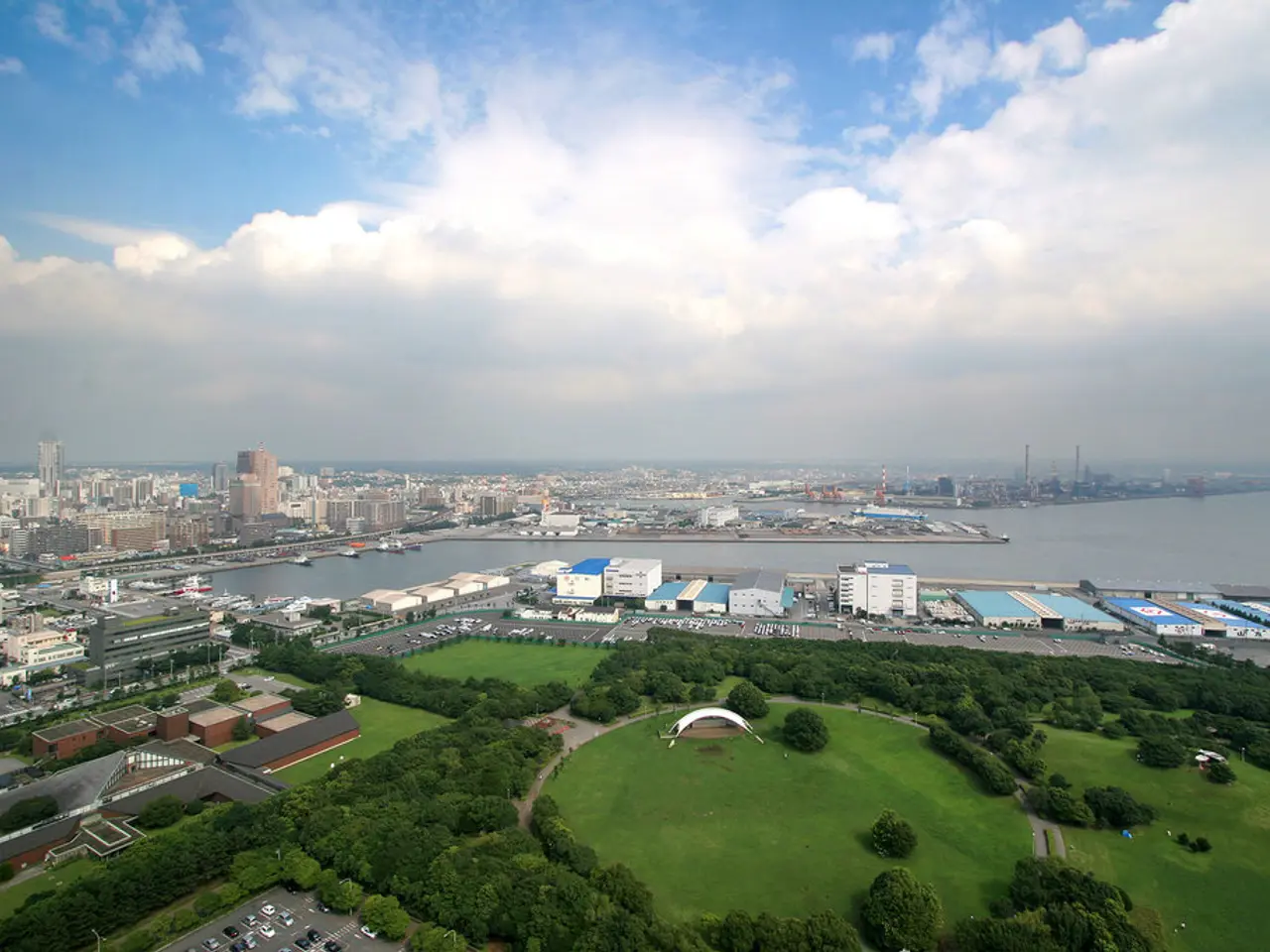City Sustainable Gardening: Strengthening Resiliency within Urban Spaces
In a world where urban sprawl is increasingly common, urban permaculture is emerging as a powerful solution to create greener, more sustainable, and resilient cities. This innovative approach to urban design and agriculture is making a significant impact in cities across the globe.
Urban permaculture helps reduce food transport emissions and improves local food accessibility, bringing communities closer together. By promoting resilience and sustainability in cities, it aids in the fight against climate change and resource scarcity. Urban permaculture principles include using resources wisely, reducing waste, and boosting biodiversity.
One of the most successful examples of urban permaculture can be found in Havana, Cuba, where over 90% of the food is grown using permaculture principles, ensuring food security and community engagement. Another city leading the way is Melbourne, Australia, which uses permaculture to tackle urban problems such as cutting carbon emissions, managing waste better, and boosting biodiversity.
Sky Greens in Singapore is a pioneering vertical urban farm that produces about one ton of leafy vegetables every two days using innovative, space-efficient methods. Rooftop farms, community gardens, and vertical farms in various cities, like Singapore, also utilise unused urban spaces to grow organic produce, promoting circular economies and supporting biodiversity amid urban sprawl.
Community-supported agriculture (CSA) models in Indian cities foster local farmer relationships, reduce food miles, and build awareness of seasonality and sustainable diets. Sustainable urban farms in underserved U.S. communities, such as those supported by Lincoln University of Missouri, serve food deserts by producing healthy crops and acting as community centers and educational venues.
Urban permaculture initiatives are not without challenges. Limited space, contaminated soil, resource scarcity, and regulatory barriers are common hurdles. However, supportive policies and regulations can foster the growth of sustainable urban permaculture practices, enhancing the resilience of city environments.
Urban permaculture design fits well in urban areas, from homes to public spaces, making cities better places to live. It also improves urban heat islands, pollution, and poor air quality, and reduces resource depletion and waste generation. Paris, for instance, has 30 hectares dedicated to urban farming, with over 220 sites, and supports over 70 sites through initiatives like Parisculteurs.
Investing in urban ecosystems and green spaces improves community life, health, and well-being. Urban permaculture is a design approach that combines "permanent agriculture" and "permanent culture" to create sustainable living spaces in cities. The goal of urban permaculture is to make cities greener, more resilient, and self-sustaining, benefiting both the planet and city dwellers.
Green jobs in farming, energy, and design come from permaculture, helping local economies grow. Farmer's markets create a circle of support for farmers, consumers, and businesses that handle food, leading to significant increases in economic activity for various stakeholders. Urban permaculture strategies, such as urban farms, edible landscapes, green spaces, ecosystem design, biomimicry in urban planning, and the use of renewable energy, offer promising avenues for a greener future for cities worldwide.
- Incorporating companion planting, a key component of urban permaculture, can increase yield and reduce pest issues in backyard gardens, enhancing sustainability in home-and-garden practices.
- As urbanites become more conscious about their lifestyle choices, fashion-and-beauty industries might start focusing on eco-friendly practices and materials, contributing to biodiversity conservation.
- To further boost biodiversity, pet owners can opt for native species or plant-based companions for their pets, fostering a relationship between humans, pets, and nature.
- Travelers seeking sustainable experiences can choose eco-friendly accommodations for their vacations, reducing carbon emissions and supporting water management practices in the travel sector.
- Cars can be a significant contributor to urban pollution andResource depletion, but electric or hybrid vehicles, along with effective public transportation systems, can help reduce emissions and promote sustainability in cities.
- Urban permaculture initiatives can also extend to education-and-self-development, with workshops and courses teaching city dwellers about sustainable practices and home-grown food solutions.
- Shopping locally for food and other essentials reduces fuel consumption, contributing to a greener city and keeping the local economy thriving.
- In casinos and gambling establishments, eco-friendly buildings, renewable energy sources, and water-efficient systems can help decrease their environmental footprint.
- Sports organizations can collaborate with urban permaculture proponents to create sports facilities with built-in gardens, reducing waste generation and offering healthier, more environmentally-friendly play areas for athletes.
- Weather forecasting and adaptation strategies play a crucial role in successful urban permaculture, enabling cities to prepare for potential challenges and maximize crop growth in various climatic conditions.




